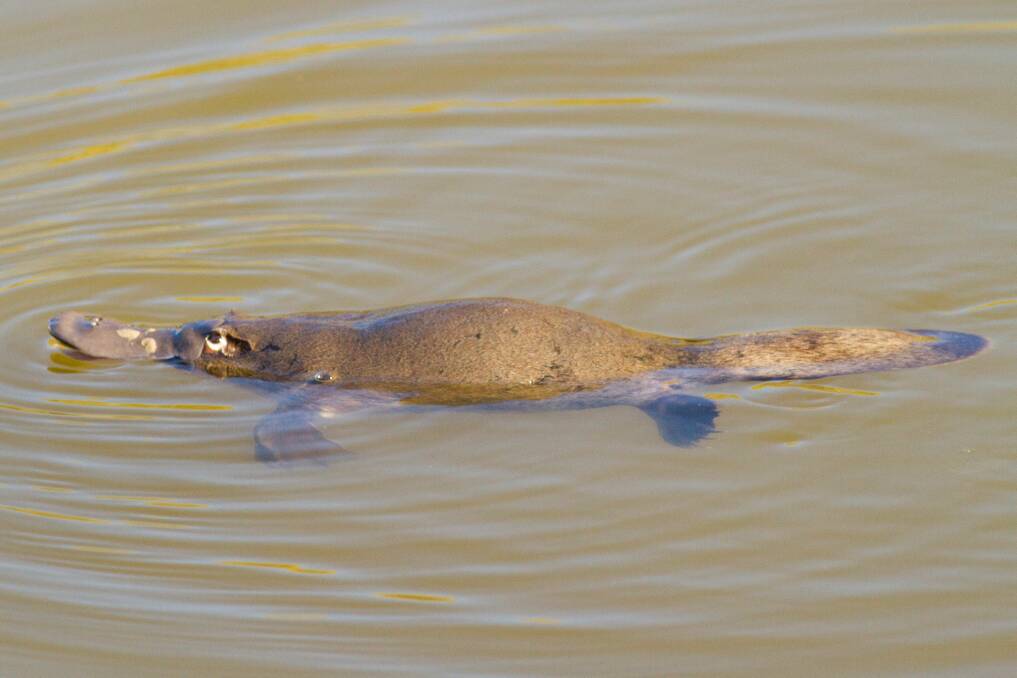
Gliding effortlessly across the surface of a water body, a small, silky silhouette cuts a stunning figure. As gracefully as it first appears, the animal quickly dips and dives deep to feed on its preferred tasty morsels.
Subscribe now for unlimited access.
$0/
(min cost $0)
or signup to continue reading
The fleeting glance is one of a remarkable evolutionary contradiction.
Unique and elusive, our platypus is one of the Australia's most iconic creatures. With a soft double coat, the warm-blooded mammal nurtures its young with nourishing milk. Yet it lays soft-shelled eggs much like a bird. What a paradox.
Its closest relative is a land-loving spiny echidna. As far as egg laying mammals go, our monotremes stand alone.
Underwater, the platypus's highly sensitive bill emits minute electronic pulses as it scans for prey to feast upon. Males are equipped with venomous spurs to sort out any disagreements with would-be predators.
Platypuses are resilient and often hard to spot out in the wild. Patience is the secret to a rewarding experience of observing a platypus going about its business.
Its elusiveness has led to the belief they usually live in remote areas.
In reality though, they can be found in many rivers and creeks across our region. They can even be spotted in Lake Burley Griffin.
The wetland sanctuary nestled in the heart of Tidbinbilla Nature Reserve is a popular platypus hot spot.
The Queanbeyan River close to the city centre is another, illustrating that people and platypuses can co-habitate.
Despite this, very little is known of their distribution across the broader bush capital region.
August is Platypus Month. With spring rapidly approaching, this time of year is ideal for spotting a platypus as the males busily prepare for the breeding season ahead.
Over the month we are holding surveys to count these much-loved iconic creatures.
There will be 22 surveys at various locations across the region including Jerrabomberra Wetlands, the Molonglo River near Coppins Crossing and on the Murrumbidgee River at Point Hut Crossing.
There is still plenty of time to sign up to a survey. The one-hour surveys take place in the mornings and the afternoons so you don't have to be an early riser to take part.
Anyone can help with the surveys with no prior experience necessary. Warm clothes, binoculars and a watch or phone is all that volunteers are required to bring on the day.
If you're interested in helping out with the surveys, send an email to waterwatch@act.gov.au.
- Brett McNamara is with ACT Parks & Conservation Service.

